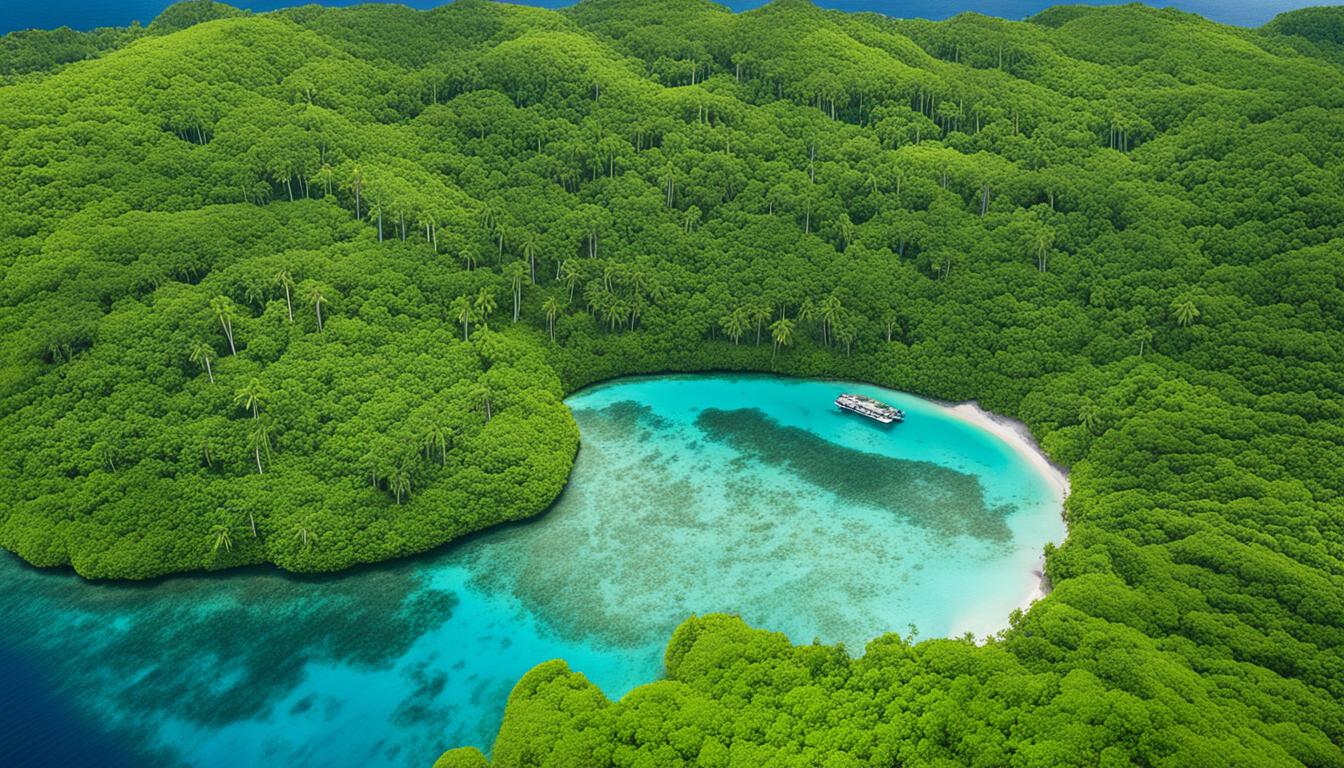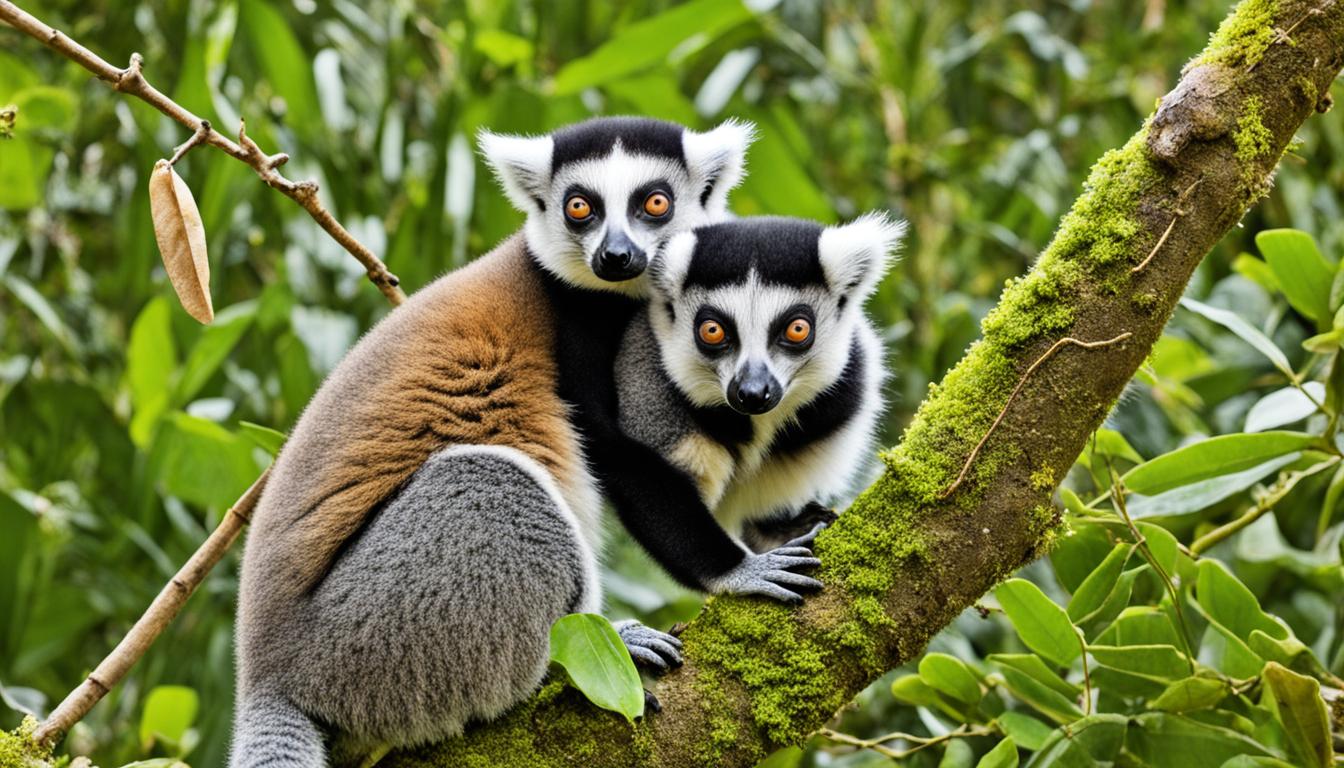Moldova Biodiversity and the Built Environment
Did you know that Moldova, a small landlocked country in Eastern Europe, is home to over 5,513 plant species and 14,800 animal species? This remarkable diversity of flora and fauna contributes to Moldova’s unique biodiversity and emphasizes the importance of conservation efforts to protect its natural heritage.
Key Takeaways:
- Moldova boasts a rich biodiversity, with over 5,513 plant species and 14,800 animal species.
- Conservation efforts are essential for preserving Moldova’s natural heritage and maintaining ecological balance.
- Moldova has implemented the Biodiversity Conservation Strategy and aims to expand protected areas to 8% of its territory.
- The country is committed to achieving the Aichi Biodiversity Targets and has specific action plans for the protection of endangered species.
- Sustainable financing, improved coordination, and monitoring are crucial for the effective implementation of biodiversity conservation measures in Moldova.
The Importance of Biodiversity Conservation
Biodiversity conservation plays a critical role in ensuring the environmental sustainability of Moldova. The preservation of species richness and the restoration of ecosystems are key goals of the Biodiversity Conservation Strategy. This comprehensive strategy encompasses a range of action plans aimed at protecting diverse ecosystems, regulating human activities, combating alien species, and promoting traditional knowledge and practices.
The Biodiversity Conservation Strategy acknowledges the importance of safeguarding various ecosystems and species in Moldova. Through targeted interventions and sustainable practices, the country aims to maintain the delicate balance of its natural environment. By protecting biodiversity, Moldova can enhance ecosystem resilience, support native species, and create a healthier and more sustainable future for its environment.
The preservation of species richness and the restoration of ecosystems are key goals of the Biodiversity Conservation Strategy.
Promoting Ecosystem Diversity
One of the primary focuses of the Biodiversity Conservation Strategy is to protect and restore diverse ecosystems across Moldova. By safeguarding forests, wetlands, grasslands, and other natural habitats, the country can preserve critical biodiversity hotspots. These efforts are essential for maintaining ecological balance, promoting sustainable land use practices, and providing habitats for a wide range of plant and animal species.
Regulating Human Activities
Regulating human activities is another crucial aspect of biodiversity conservation in Moldova. The Biodiversity Conservation Strategy emphasizes the need to implement measures that minimize the negative impact of activities such as agriculture, construction, and infrastructure development on natural ecosystems. By implementing sustainable practices, Moldova can mitigate environmental degradation and protect vulnerable species and habitats.
Moldova can enhance ecosystem resilience, support native species, and create a healthier and more sustainable future for its environment.
Combating Alien Species
Invasive alien species pose a significant threat to biodiversity in Moldova. The Biodiversity Conservation Strategy recognizes the importance of combatting these species and preventing their negative impact on ecosystems. By implementing measures to control and eradicate invasive plants and animals, Moldova can protect its native species and preserve the integrity of its natural habitats.
Promoting Traditional Knowledge and Practices
The Biodiversity Conservation Strategy acknowledges the importance of incorporating traditional knowledge and practices in biodiversity conservation efforts. Indigenous communities and local stakeholders have valuable insights and practices that have sustained ecosystems for centuries. By supporting and promoting traditional knowledge, Moldova can benefit from sustainable practices and ensure the long-term preservation of its unique biodiversity.
Conserving biodiversity is not only essential for Moldova’s natural environment but also for the well-being of its communities. By implementing the Biodiversity Conservation Strategy and its associated action plans, Moldova is taking important steps towards creating a sustainable future, where both nature and humans can thrive in harmony.
NBSAP Implementation and Aichi Biodiversity Targets
Moldova is dedicated to implementing its National Biodiversity Strategic Action Plan (NBSAP) and achieving the Aichi Biodiversity Targets. As part of this commitment, the country aims to expand its natural protected areas to 8% of its territory by 2020.
One of the key components of the NBSAP is the formulation of action plans for the protection of endangered species. These plans outline specific measures to safeguard vulnerable flora and fauna, ensuring their survival for future generations.
Moldova has also implemented legislation to regulate human activities that may harm biodiversity. By imposing regulations, the country aims to minimize the negative impact of human actions on ecosystems and protect the delicate balance of nature.
In addition, combatting invasive species is an important part of Moldova’s ecological initiatives. These non-native species can disrupt native ecosystems and threaten the survival of native plants and animals. Through targeted efforts, Moldova aims to control and prevent the spread of invasive species, safeguarding the ecological integrity of its habitats.
Preserving traditional knowledge and practices is another vital aspect of Moldova’s commitment to biodiversity conservation. Traditional knowledge passed down through generations offers valuable insights into sustainable land-use practices, ecosystem management, and species protection.
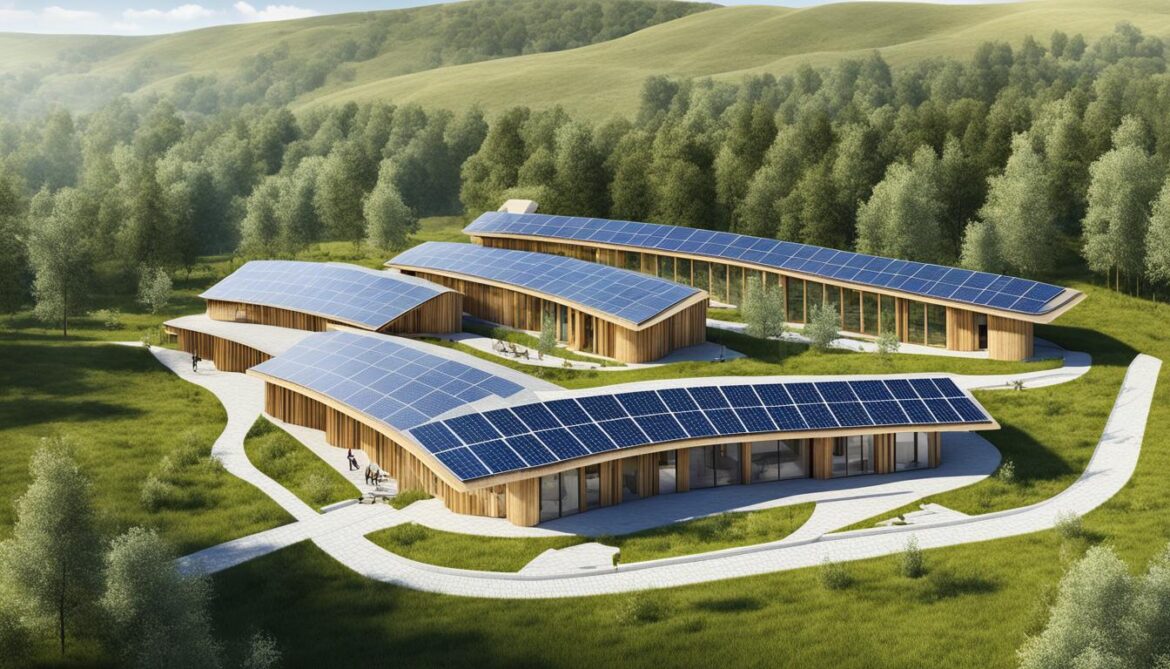
Highlighting Moldova’s Sustainable Architecture Initiatives
Moldova’s dedication to ecological initiatives extends to sustainable architecture. The country recognizes the importance of constructing buildings that minimize their environmental footprint and contribute to a more sustainable future.
Adopting sustainable architecture practices not only reduces the impact on the environment but also improves the quality of life for residents. Energy-efficient buildings, the use of renewable materials, and innovative design strategies are some of the key elements of sustainable architecture in Moldova.
“Sustainable architecture is not just about designing eco-friendly buildings; it’s about creating spaces that harmonize with nature and positively impact both people and the environment.”
Moldova’s sustainable architecture initiatives align with its broader goals of environmental preservation and sustainable development. By integrating sustainability principles into the construction and design of buildings, the country strives to create a more resilient built environment that respects and protects its natural surroundings.
| Benefits of Sustainable Architecture in Moldova | Examples of Sustainable Architecture Initiatives |
|---|---|
|
|
By embracing sustainable architecture, Moldova is not only creating environmentally friendly buildings but also setting an example for other nations to follow. Through ongoing efforts and collaborations, Moldova continues to drive positive change towards a more sustainable and resilient future.
Action Plans for Biodiversity Conservation
Moldova’s National Biodiversity Strategic Action Plan (NBSAP) encompasses a range of comprehensive action plans aimed at conserving biodiversity. These plans take into account various crucial aspects, including the creation of ecological networks, the implementation of legislation to regulate harmful human activities, the combatting of invasive species, and the preservation of traditional knowledge and practices. By addressing these key areas, Moldova strives to protect its unique biodiversity and maintain the delicate ecological balance in the region.
“Moldova’s NBSAP action plans are designed to tackle multiple challenges and ensure the long-term preservation of our natural heritage,” says Dr. Elena Dascălu, Head of Environmental Protection Agency. “We are committed to creating sustainable urban environments that integrate green infrastructure and promote the conservation of our diverse ecosystems.”
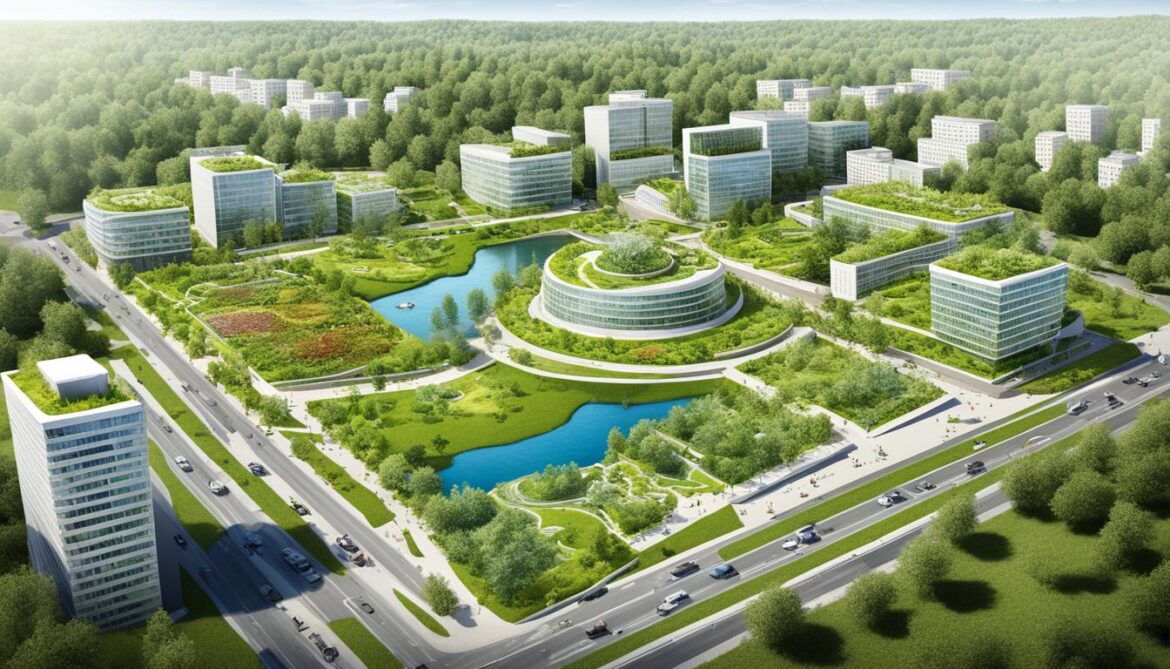
Creating Ecological Networks
One vital aspect of Moldova’s action plans is the creation of ecological networks. These networks establish connections between various habitats and protected areas, allowing for the movement of species and the maintenance of genetic diversity. By establishing corridors and stepping-stone habitats, Moldova aims to enhance the resilience and adaptability of its ecosystems in the face of climate change and other environmental pressures.
Regulating Harmful Human Activities
Moldova recognizes the need to regulate harmful human activities that can negatively impact biodiversity. The implementation of legislation and policies ensures that activities such as deforestation, habitat degradation, and pollution are kept in check. By enforcing regulations and promoting eco-friendly practices, Moldova aims to minimize the adverse effects of human actions on the natural environment.
Combatting Invasive Species
The presence of invasive species can have devastating effects on native ecosystems and biodiversity. Moldova’s action plans include strategies for identifying, monitoring, and controlling invasive species. By taking proactive measures to combat invasions, Moldova aims to preserve the integrity and functionality of its ecosystems.
Preserving Traditional Knowledge and Practices
Moldova recognizes the importance of traditional knowledge and practices in biodiversity conservation. The preservation of indigenous knowledge and sustainable practices is integral to maintaining the ecological balance. Through education and awareness programs, Moldova seeks to empower local communities to become custodians of their natural environment and promote conservation efforts.
Expanding Protected Areas
Moldova is dedicated to expanding its natural protected areas in line with the Aichi Biodiversity Targets. The goal is to have 8% of the country’s land designated as protected areas by 2020.
Protected areas play a crucial role in preserving habitats, ensuring the survival of plant and animal species, and providing opportunities for research, education, and ecotourism. By increasing the size of protected areas, Moldova aims to safeguard its unique wildlife and contribute to global conservation efforts.
“Expanding protected areas is essential for preserving the delicate balance of ecosystems and safeguarding the future of wildlife in Moldova,” says Dr. Elena Popa, a renowned conservation biologist.

“Protected areas are the backbone of biodiversity conservation. They serve as refuges for endangered species and act as natural laboratories for scientific research. Additionally, they provide opportunities for nature-based tourism, generating economic benefits for local communities,”
– Dr. Victor Iacoban, environmental scientist and advocate for wildlife preservation
| Benefits of Expanding Protected Areas | Examples of Protected Areas in Moldova |
|---|---|
|
|
Expanding protected areas not only ensures the preservation of Moldova’s wildlife but also contributes to the sustainable development of the country. It provides opportunities for outdoor recreation, education, and raising awareness about the importance of biodiversity.
Preserving Endangered Species
Moldova is dedicated to the preservation of endangered species through specific action plans. The protection of these vulnerable plants and animals involves monitoring and safeguarding their habitats, ensuring their survival for future generations. It is essential to raise awareness about the importance of conserving endangered species and the impact their potential extinction can have on the biodiversity of Moldova.
The implementation of legislation plays a crucial role in the conservation of endangered species. Regulations are in place to regulate human activities, such as hunting and fishing, that pose a threat to these vulnerable populations. By enforcing these laws, Moldova strives to create a safe and harmonious environment where endangered species can thrive.
“Protecting endangered species is not only crucial for their survival but also for the overall ecological balance of Moldova. Every species has a unique role to play in maintaining the health and functionality of ecosystems.”
Monitoring and Safeguarding Habitats
Monitoring the habitats of endangered species is essential to assess their population size, behavior, and environmental conditions. By closely monitoring these habitats, scientists and conservationists can identify potential threats and take necessary precautions to safeguard them. This involves regular surveys, research, and data collection to ensure comprehensive understanding of the habitats and the species within them.
Efforts are made to establish protected areas and implement conservation plans that focus on preserving these habitats. The creation of sanctuaries and reserves provides a safe haven for endangered species, promoting their growth and protecting them from human interference.
Through research and monitoring, Moldova aims to maintain a balance between human activities and the preservation of endangered species, ensuring their survival for future generations.
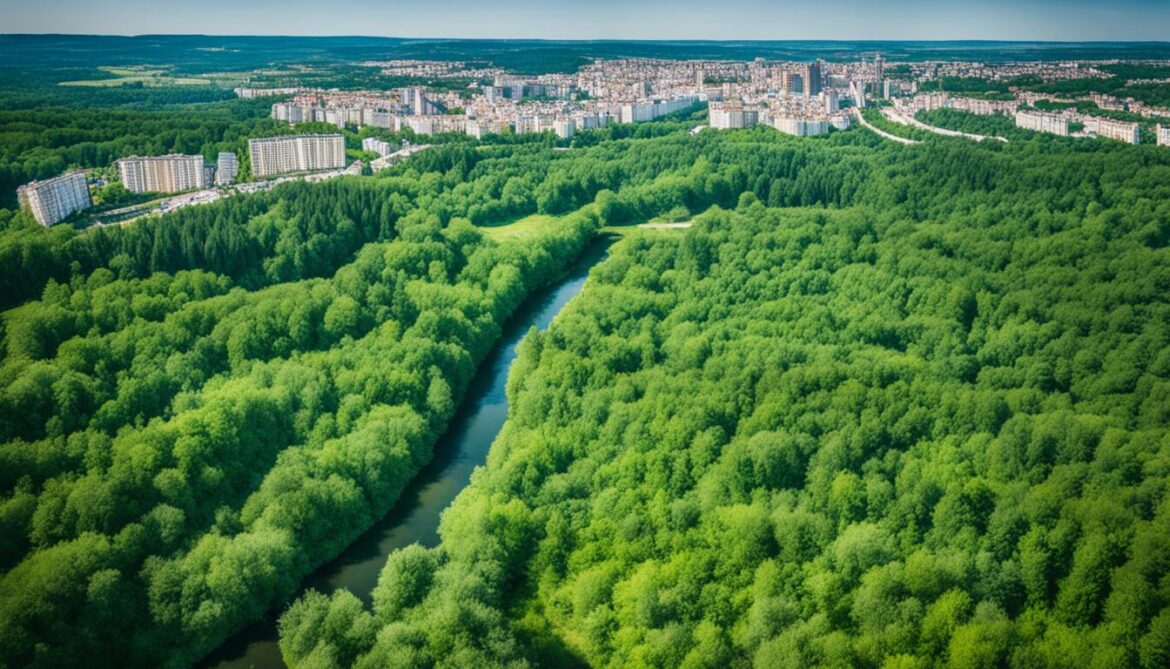
Awareness and Education
Education and awareness play a vital role in the conservation of endangered species in Moldova. It is crucial to inform the public about the value of these species and the importance of their protection. By raising awareness, Moldova aims to foster a sense of responsibility among its citizens towards the preservation of wildlife.
Various initiatives are undertaken to educate the public about endangered species and their habitats. These include educational programs, workshops, and campaigns aimed at schools, communities, and the general public. By engaging individuals from all walks of life, Moldova strives to build a community that values and actively contributes to the preservation of endangered species.
Collaboration for Conservation
The conservation of endangered species requires collaboration and cooperation among various stakeholders. Moldova actively collaborates with local communities, non-governmental organizations (NGOs), and international partners to ensure effective conservation strategies.
Partnerships with NGOs provide valuable expertise, resources, and support for conservation efforts. International collaborations help Moldova access global knowledge and best practices. By working together, stakeholders can pool their resources and expertise to develop effective strategies to protect endangered species.
Moldova’s commitment to preserving endangered species contributes not only to the conservation of biodiversity but also to the country’s rich natural heritage. Through monitoring, awareness, and collaboration, Moldova strives to protect these vulnerable species and maintain a sustainable balance between human activities and wildlife preservation.
Support Mechanisms for Implementation
In order to ensure the effective implementation of biodiversity conservation efforts in Moldova, various support mechanisms have been put in place. These mechanisms include:
- Legislation: Moldova has established comprehensive legislation that serves as a solid foundation for the protection and management of natural resources. This legislation provides guidelines and regulations for sustainable development and the preservation of biodiversity.
- Funding: Adequate funding from different sources is essential to finance protected areas and conservation projects. These financial resources enable the maintenance and proper management of these areas, as well as the implementation of conservation initiatives and research.
- Capacity-building Initiatives: Enhancing the skills and knowledge of individuals and organizations involved in biodiversity conservation is crucial. Capacity-building initiatives provide training, workshops, and educational programs that empower stakeholders to effectively contribute to conservation efforts.
- Partnerships and Collaborations: Efficient communication and coordination among various stakeholders are vital for successful implementation. Partnerships and collaborations between government agencies, non-governmental organizations, and local communities ensure the smooth execution of conservation measures and the sharing of expertise.
By establishing these support mechanisms, Moldova is able to overcome challenges and effectively preserve its unique biodiversity while promoting sustainable environmental development.

“Biodiversity is not just about saving species; it is about our survival, our well-being, and the future of our planet.” – Dr. Cristian Herțașcu, National Environmental Center
Monitoring and Reviewing Implementation
Moldova is dedicated to the continuous monitoring and regular review of its biodiversity conservation programs. This commitment is crucial for evaluating the effectiveness of ongoing efforts and making necessary improvements. However, the country faces certain challenges due to limited financial resources and a shortage of specialists. Despite these obstacles, Moldova remains determined to advance its ecological initiatives.
Transparent data on monitoring and program outcomes play a pivotal role in assessing the impact of conservation efforts. By closely scrutinizing the collected data, Moldova can identify areas of success and areas that require additional attention. Evaluation and analysis enable the country to make informed decisions and implement targeted measures for further enhancing biodiversity conservation.
Moldova recognizes that effective collaboration among various ministries and institutions is essential for successful biodiversity conservation. By improving cooperation and communication, the country can optimize resource allocation, avoid duplication of efforts, and foster a shared sense of responsibility towards ecological initiatives.
In its pursuit of comprehensive monitoring, Moldova also acknowledges the importance of research funding. Adequate financial support is necessary to conduct in-depth studies, gather reliable data, and acquire valuable insights into the state of biodiversity. By increasing research funding, Moldova can strengthen its monitoring activities and enhance the understanding of ecological trends and conservation impact.
“Efficient monitoring and regular review are integral to the success of biodiversity conservation. By strategically analyzing data and promoting collaboration, Moldova can make significant progress in preserving its ecological heritage.”
Priority Areas: Improving Monitoring and Implementation
- Enhancing the collection and analysis of monitoring data
- Strengthening research funding for comprehensive ecological studies
- Promoting collaboration and coordination among ministries and institutions
- Facilitating knowledge sharing and best practices
| Key Challenges | Solutions |
|---|---|
| 1. Limited financial resources for monitoring | Increase research funding and explore partnerships with international organizations |
| 2. Shortage of specialists and expertise | Invest in capacity-building programs and offer specialized training opportunities |
| 3. Insufficient coordination among ministries and institutions | Establish a centralized platform for information sharing and regular meetings |

Moldova’s Biodiversity in Numbers
Moldova is blessed with a diverse range of natural ecosystems, covering approximately 15% of its territory. These ecosystems provide a habitat for a remarkable variety of flora and fauna, contributing to the country’s rich biodiversity. Let’s take a closer look at the numbers:
- Plant species: Moldova is home to 5,513 different plant species, each playing a unique role in maintaining the ecological balance. These plants include a wide range of trees, flowers, shrubs, and grasses.
- Animal species: The animal kingdom in Moldova is thriving, with a total of 14,800 different species. This includes a staggering 461 vertebrate species, which consist of mammals, birds, reptiles, amphibians, and fish.
The abundance of plant and animal life in Moldova showcases the country’s commitment to preserving its natural heritage. By protecting these species and their habitats, Moldova ensures the continued existence of its precious biodiversity.
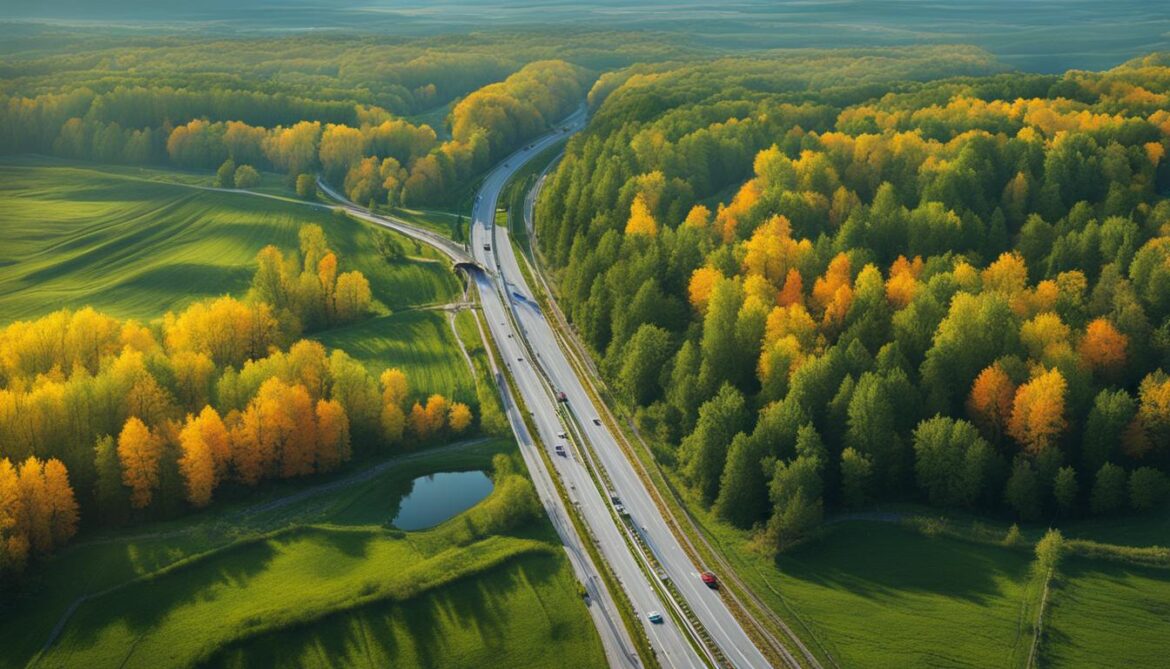
As we continue our exploration of Moldova’s remarkable biodiversity, it’s important to remember the delicate balance between the built environment and the preservation of the natural world. Let’s delve deeper into how Moldova is integrating biodiversity conservation into territorial planning, as we explore in the next section.
Mainstreaming Biodiversity into Territorial Planning
Moldova recognises the importance of integrating biodiversity conservation into its territorial planning policies and land use practices. Through modifications to its land use planning and enforcement system, the country aims to address the issue of biodiversity loss. The goal is to showcase effective methods for conserving and sustainably utilizing biodiversity on communal lands located outside of protected areas.
Methods for Mainstreaming Biodiversity
Moldova is adopting various strategies to ensure that biodiversity becomes a central consideration in territorial planning:
- Integrating biodiversity objectives into land use planning guidelines
- Developing green infrastructure plans to enhance ecological connectivity
- Promoting sustainable practices in agriculture, forestry, and urban development
- Including biodiversity indicators in decision-making processes
By mainstreaming biodiversity into territorial planning, Moldova aims to achieve a harmonious balance between its urban environment and the natural world. This approach will help preserve and enhance green spaces, protect wildlife corridors, and create a sustainable and resilient landscape.
Benefits of Mainstreaming Biodiversity
The integration of biodiversity considerations into territorial planning brings a range of benefits:
- Enhanced resilience to climate change impacts
- Promotion of sustainable land and resource management
- Creation of healthier and more livable cities
- Conservation of vital ecosystems and biodiversity hotspots
- Protection of key natural resources and ecosystem services
“Mainstreaming biodiversity into territorial planning is essential for ensuring a sustainable and vibrant future for Moldova. By embracing green infrastructure and adopting nature-based solutions, the country can proactively address the challenges of urbanization and habitat loss while preserving its unique biodiversity.”
The table below illustrates the key elements of Moldova’s approach to mainstreaming biodiversity into territorial planning:
| Elements of Mainstreaming Biodiversity | Description | Benefits |
|---|---|---|
| Integration into land use planning | Incorporating biodiversity objectives into guidelines and regulations for land use planning | Promotes sustainable development and protects natural habitats |
| Development of green infrastructure plans | Creating a network of interconnected green spaces to enhance biodiversity and ecological connectivity | Improves habitat quality and facilitates species movement |
| Promotion of sustainable practices | Encouraging sustainable agriculture, forestry, and urban development | Ensures sustainable resource management and reduces environmental impacts |
| Inclusion of biodiversity indicators | Using measurable indicators to assess the impact of planning decisions on biodiversity | Enables evidence-based decision-making and monitoring of conservation efforts |
By implementing these strategies, Moldova is actively working towards a future where urban planning and green infrastructure go hand in hand, promoting a sustainable and biodiverse environment for its citizens.
Strategy for Biological Diversity
Moldova has developed a Strategy for Biological Diversity for the period of 2015-2020. The strategy aims to improve the quality of biodiversity components by strengthening the basis for sustainable development. It aligns with international treaties and sets priorities for adjusting national policies to European standards. The strategy will be implemented through collaboration between various ministries, the Academy of Sciences, and local authorities.
This strategy is a crucial step towards conserving and protecting Moldova’s unique biodiversity. By focusing on sustainable development, Moldova aims to ensure the long-term viability of its ecosystems and the well-being of its inhabitants. Through the collaborative efforts of different stakeholders, this strategy will drive the implementation of conservation projects and ecological initiatives throughout the country.
The Goals of the Strategy
The Strategy for Biological Diversity in Moldova has the following goals:
- Conserving and restoring ecosystems
- Protecting and promoting sustainable use of biodiversity
- Integrating biodiversity considerations into sectoral policies and plans
- Securing sustainable financing for biodiversity conservation
- Enhancing public awareness and understanding of biodiversity
- Strengthening scientific research and monitoring
These goals reflect the commitment of Moldova to enhance its conservation efforts and promote sustainable development in line with international standards. The implementation of this strategy will require coordinated actions, resource allocation, and continuous monitoring to ensure its successful execution.
The image above represents the dedication and hard work that goes into biodiversity conservation projects in Moldova. Through the implementation of the Strategy for Biological Diversity, initiatives like this create a lasting impact on the environment, preserving the country’s natural heritage for future generations.
Conclusion
Moldova’s commitment to biodiversity conservation is evident through the implementation of the Biodiversity Conservation Strategy, NBSAP, and the Aichi Biodiversity Targets. The country faces challenges but continues to work towards expanding protected areas, preserving endangered species, and mainstreaming biodiversity into territorial planning. Through sustainable financing, improved coordination, and monitoring, Moldova strives to ensure the environmental sustainability of its unique biodiversity and built environment.
By implementing comprehensive action plans and legislation, Moldova is actively protecting its natural resources and promoting the preservation of its diverse ecosystems. The expansion of protected areas plays a vital role in safeguarding habitats, promoting research and education, and supporting ecotourism. Efforts to preserve endangered species are essential for maintaining the ecological balance and raising awareness about the importance of conservation.
Moldova’s vision for biodiversity conservation is supported by various mechanisms, including funding, capacity-building initiatives, and partnerships. Transparent monitoring and regular reviews of conservation programs are crucial for evaluating their effectiveness and identifying areas for improvement. Despite challenges, Moldova is determined to align its national policies with international standards and prioritize the sustainable development of its environment.



